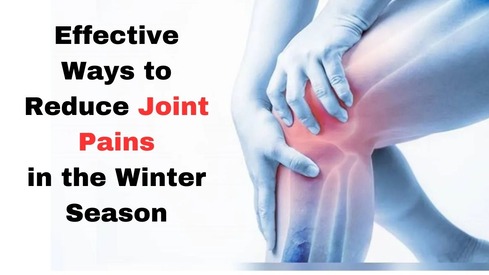Have you ever thought about why leg pains or joint pain increase in the winter season? In this blog, we will learn why winter causes extreme joint pain and the effective ways to avoid increased cold-weather pain.
Why joint pain increases when it’s cold
While it’s very common to have leg pain or joint pain, it becomes a serious problem for many during the winter season. Regardless of age, several complain of joint pains during winter. The exact cause of the problem is yet to be figured out. However, Dr. Digvijay Sharma, one of the best vascular surgeons in Faridabad, states a theory to explain the problem. He says, “During cold weather, the blood routed away to limbs that cause joint pain”. Also, the muscles become tighter in the colder months, which results in stiffness and joint pain.
The winter season can cause discomfort and pain mainly in the hips, ankles, and knees. And, this occurs when you run or walk regularly. When you exercise regularly, you put pressure on weight-bearing joints. That time the pain you are experiencing can be the reason for restricted blood flow to the joints or the changes in pressure. Cold weather causes less mobility and flexibility of the joints, which leads to pain.
Well, you need not worry about joint pain or leg pain in the winter season. You can try a few tips that are highly effective in reducing pain and stiffness.
Tips to Reduce Joints Pain in Winter
If you face extreme joint pain in the winter season, you should consult your healthcare provider. Your doctor will provide medication to relieve cold-weather joint pain. Apart from that, you can take other steps to make yourself more comfortable in the colder months.
Keep yourself warm
During the colder months when the temperature falls, keep yourself warm. You must cover your body with multiple layers of warm clothes. This retains the body heat which ultimately keeps the joints warm. Take warm showers or bathe. Do not go out without layering up in clothing. Use thermal undergarments to cover your hips and knees. Wear gloves to keep your palms and fingers warm.
Do warm-up exercises
If you run or do regular intense exercises, it can put pressure on weight-bearing joints. So, you should reduce the intensity of your workout sessions. Do warm-up exercises and stretches for five or more minutes. This boosts your cardiovascular system by increasing the blood flow to your muscles, which improves body temperature and you stay warm.
Don’t stop running suddenly
Physical activities help maintain good health. However, during the winter season, you shouldn’t do any exercise that is gentle on your joints, like yoga, swimming, and walking. Suddenly stopping running will make your knees cold and start to hurt. Walking keeps your knees warm. So, be gentle on your legs or hips by doing light exercises.
Stay hydrated
In colder months we don’t feel hot and sweat. But, this doesn’t mean we don’t lose fluids. For mobility and functionality, lubrications in fluid in joints are needed. If you don’t stay hydrated in the winter season it will reduce joint fluid and lubrication which leads to muscle cramping. Hence, keeping yourself hydrated throughout the season.
Take Vitamin-D supplement
Vitamin D deficiency is also an important reason for joint, bone, and muscle pain. In the winter season, we get less than necessary sunlight. Hence, you should go for vitamin D supplements or foods that are the natural source of vitamin D.
Maintain your weight
People tend to gain more weight during the winter season. Changes in your diet and reducing physical activities like running or walking will result in weight gain. Your heavy body will put pressure on the joints like knees or ankles. This can increase or worsen the joint pain. Balance your diet if you don’t want to suffer any leg pain or joint pain in winter.
However, if you have already applied all these tips and still do not get good results, you should consult a doctor or orthopedic. He will diagnose and recommend the best remedies for your joint and leg pain in winter. If needed, your primary counselor will refer you to any vascular surgeon or doctor.
In Summary, you can reduce joint and leg pain in the winter season by:
- Maintaining good health
- Eating well
- Doing light to moderate physical activity
- Keeping yourself warm in the winter
- Strengthening your leg tendons, muscles, and bones
If you have any serious concerns related to joint pain, don’t hesitate to reach Dr. Digvijay Sharma. He is one of the vascular surgeons in Delhi NCR.

